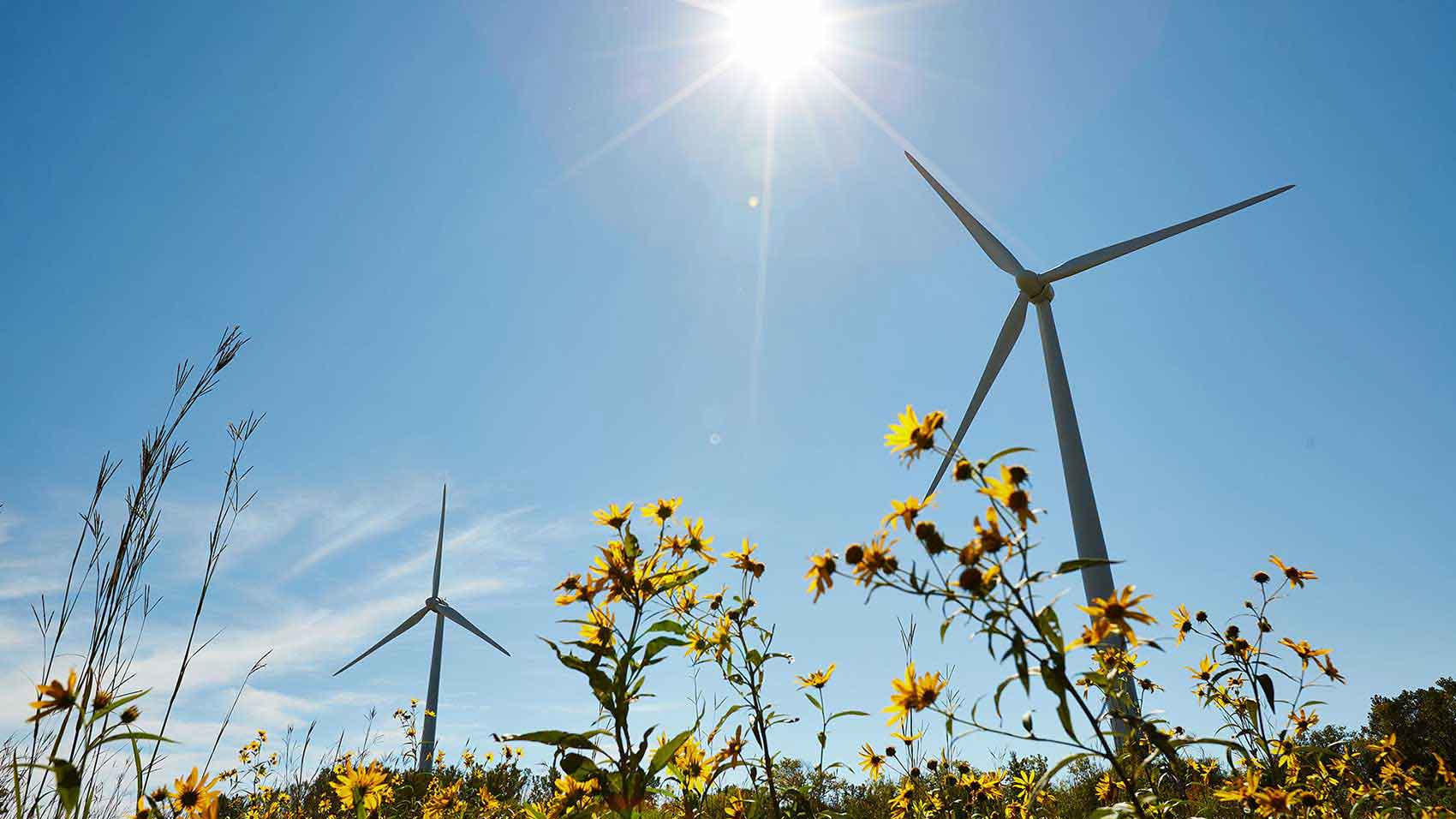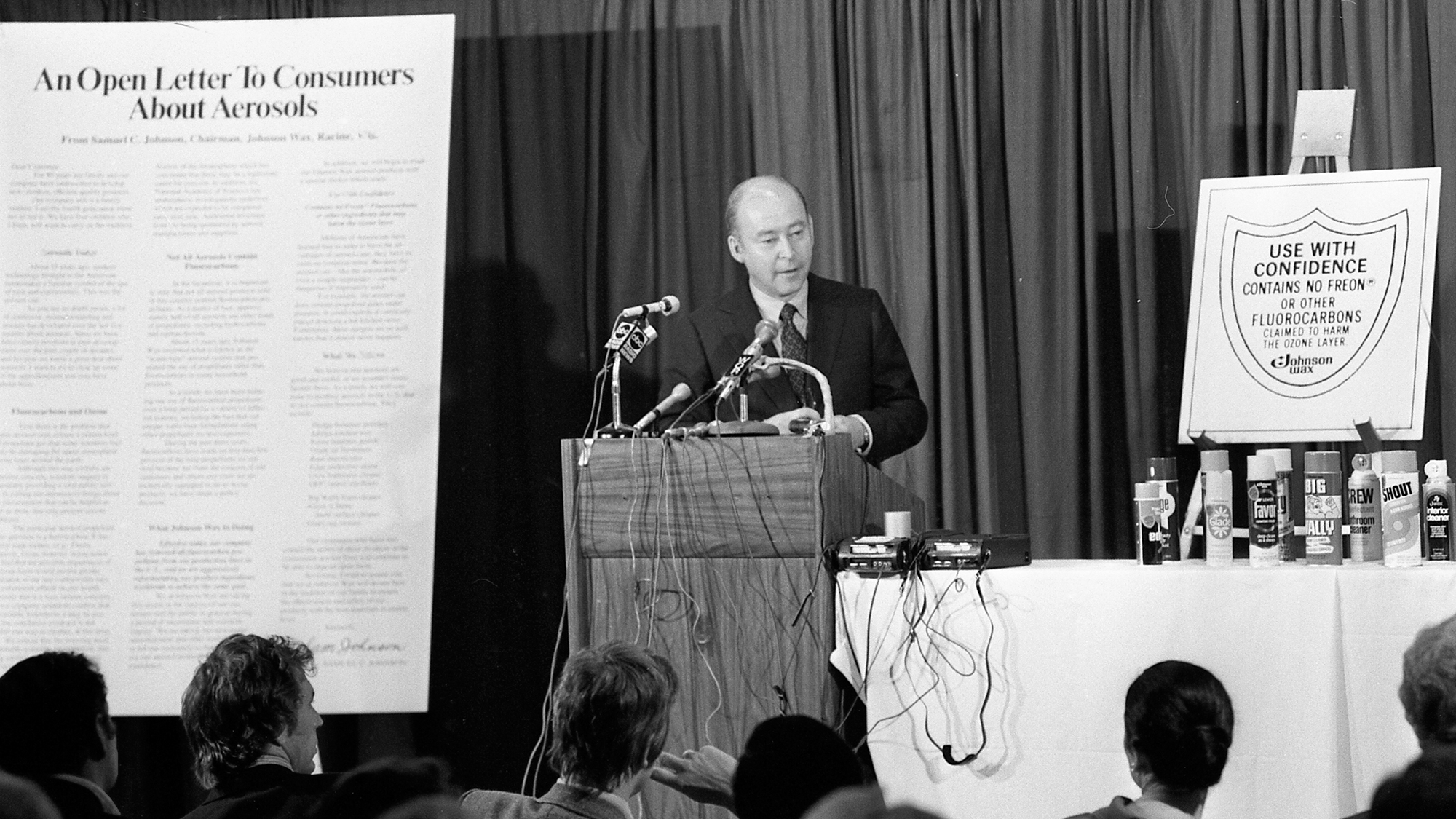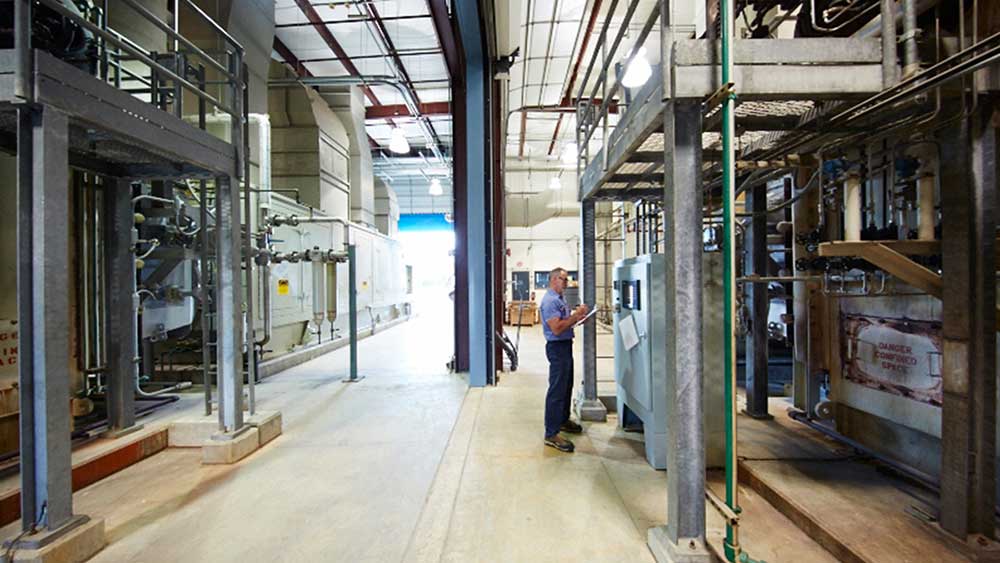
Resource Efficient Production

We’re finding ways to reduce greenhouse gas emissions, drive toward zero waste, use resources responsibly and create circular economy solutions that reduce costs and environmental impact.
Environmental Leadership Highlights
2020 EPA National Top 100 List of Green Power Users
The U.S. Environmental Protection Agency recognized SC Johnson as a top user of green power. Ranking No. 88 on the EPA's 2020 National Top 100 List of the largest green power users from the Green Power Partnership. Together, partners have amounts to more than 61 billion kilowatt-hours, which is equivalent to the annual electricity use of nearly 5.6 million average American homes.
See the full list
Goal Achievement Award for Excellence in Greenhouse Gas Management
From 2015 to 2020, we cut greenhouse gas emissions nearly 30%, doubling our goal of 15%. We were honored to have this progress recognized with a Goal Achievement Award for Excellence in Greenhouse Gas Management at the 2020 Climate Leadership Awards, hosted by the Center for Climate and Energy Solutions and The Climate Registry.
Learn more

Sam Johnsons bold decision set new heights for environmental responsibility.
More than 45 years ago, SC Johnson shocked the chemical industry and set new heights for environmental responsibility, as it was the first company to protect the Earth’s ozone layer by banning chlorofluorocarbons (CFCs) from all its aerosol products worldwide. More than a decade before the 1987 Montreal Protocol treaty designed to reduce the production and use of chemicals that contribute to the depletion of the ozone layer.
Learn more
Quick Facts
Our turbines at our Waxdale manufacturing plant generate, on average, 100% of its electrical energy onsite.
Combined, Waxdale's two cogeneration turbines lower Green House Gas (GHG) emissions by more than 47,250 metric tons each year.
In 2003, SC Johnson became the first consumer packaged good manufacturer to use methane from a local public landfill to generate electricity.



